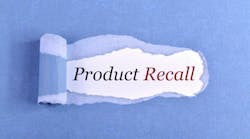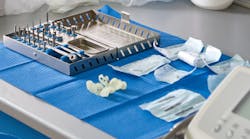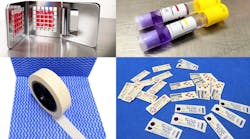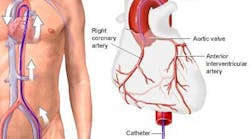The transmission of serious viruses including adenovirus, HIV and hepatitis C virus (HCV) could occur from failure to adequately disinfect ophthalmology devices such as tonometers, according to a report from the American Academy of Ophthalmology (AAO).
AAO’s report, coupled with additional data compiled by The Joint Commission, identifies an immediate threat to patients’ health and safety. Joint Commission data reveals significant unawareness or misinterpretation by healthcare organizations of manufacturers’ instructions on how to disinfect ophthalmology devices, as well as a noted decrease in these organizations’ commitment to train staff to disinfect the devices.
Triggered by patient safety concern, The Joint Commission has issued an advisory, Quick Safety 49: Disinfection of Tonometers and Other Ophthalmology Devices, reminding healthcare organizations to perform high-level disinfection of objects that touch mucous membranes of the eye. Further, the advisory states that organizations must sterilize items that contact or enter sterile tissues – such as instruments used for surgical procedures or touch an ulcerated cornea.
Lack of compliance with reprocessing has been observed with the following items:
· Tonometers
· YAG laser lens
· Eye specula
Tonometer tips have been identified as sources of ophthalmic nosocomial outbreaks commonly linked to adenovirus types 8 and 19. Desiccated virus remains viable and can be recovered after 49 days on dried plastic or metal surfaces.
Areas where these devices are used include:
· Emergency departments
· Urgent care centers
· Ophthalmology clinics, optometrist offices, and procedure rooms
· Neonatal intensive care units (NICUs)
According to The Joint Commission’s Quick Safety, healthcare organizations can use the following safety actions to protect patients from the risk of infection associated with tonometers and other ophthalmology devices:
· Review cleaning and disinfection instructions of eye instruments to ensure they are reprocessed properly. Items that touch intact surfaces of the eye must be high-level disinfected. Those that touch non-intact surfaces of the eye or are used for eye surgery must be sterilized.
· Ensure that disinfectants listed as compatible, other than bleach, are U.S Food and Drug Administration (FDA)-approved high-level disinfectants.
· Follow manufacturers’ instructions for use for ophthalmology examinations and procedures, as well as for those used to clean and disinfect products.
· Identify an expert to review product labels and instruction for use. If instructions are unclear, contact the technical services department of the item’s manufacturer.




